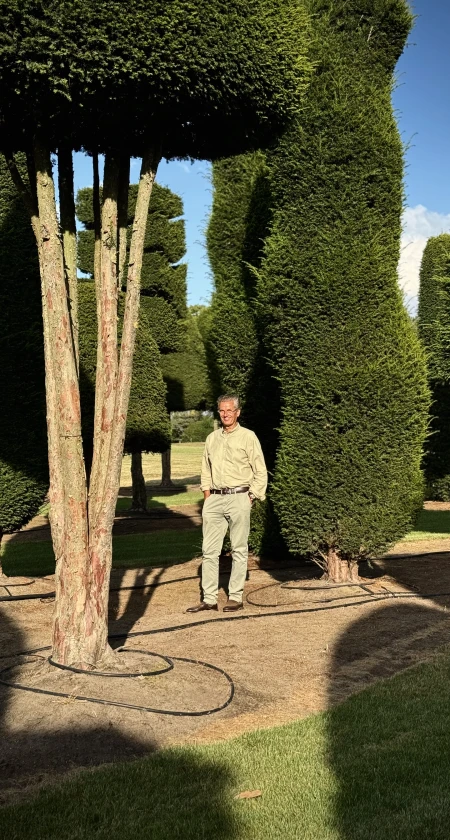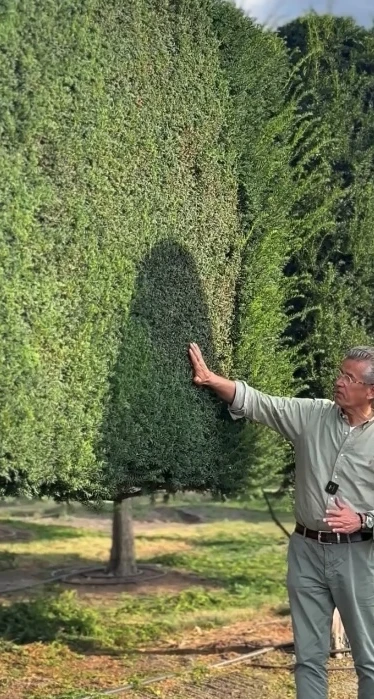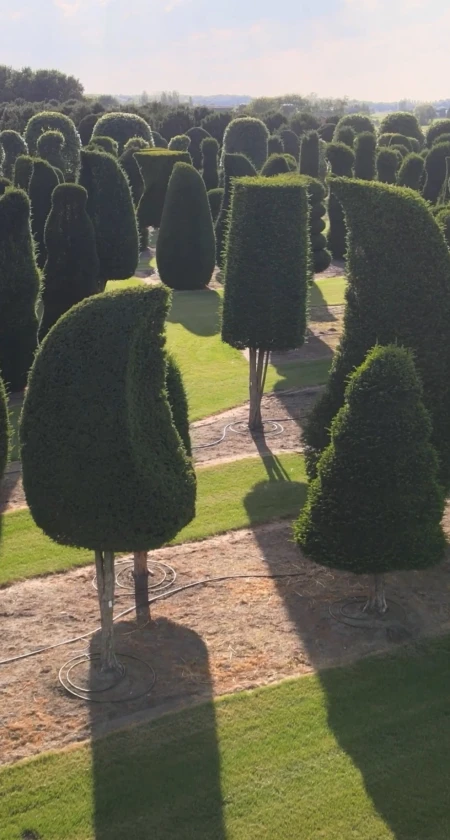


A few weeks ago, I found myself once again at one of my favourite tree nurseries in the world: the Solitair Tree Nursery near Antwerp. For me, it’s a paradise – a place I could spend days in. They practically have to drag me out of there! Because: sculptures everywhere you look. Shaped from yew trees: cubes, ellipses, waves, columns … each plant is a one-of-a-kind. And each one a piece of work that takes years to create.
All of these sculptures are commissioned pieces. Some of them for us. Cut, shaped, and compacted over many years. Sometimes clients get a little impatient – understandably so. But once the plants are delivered, suddenly something stands there in the garden that no one else has. A living sculpture. A true original.
The first cut is made in summer, the second in September. Here at Solitair Tree Nursery, you can clearly see what happens between the two. How much a yew grows in just a few months. And how much clarity a good cut can bring back.
Only when yews are cut back hard do they grow densely. And only then do these calm, compact forms emerge. A dense mass of foliage that not only looks beautiful, but also serves an ecological purpose.
I have a lot of projects coming up with yew. Not just because it can be shaped so beautifully. But also because it has so many strengths. The yew is a true climate plant. It stores CO? – not least because of its enormous foliage mass. It’s tough, tolerant of pruning, long-lived. And: a haven for birds.
From March well into July, robins, wrens and thrushes nest between its branches. Birds love the density, finding shelter and safety there.
Of course, the yew isn’t just used as a sculpture – in most cases, we encounter it as a hedge. And even there it has a powerful presence: as a boundary for privacy, as a visual and acoustic barrier, as a green wall that defines the garden – the hortus conclusus, the protected space.
If you take a closer look at a long, precisely trimmed yew hedge, it often resembles the sea. Why do we love being there so much? Because the horizon is straight. Because it radiates calm.
And that’s exactly what happens with clean, defined lines in a garden. They provide grounding. A kind of visual anchor. And when the form is right, the soul comes to rest.